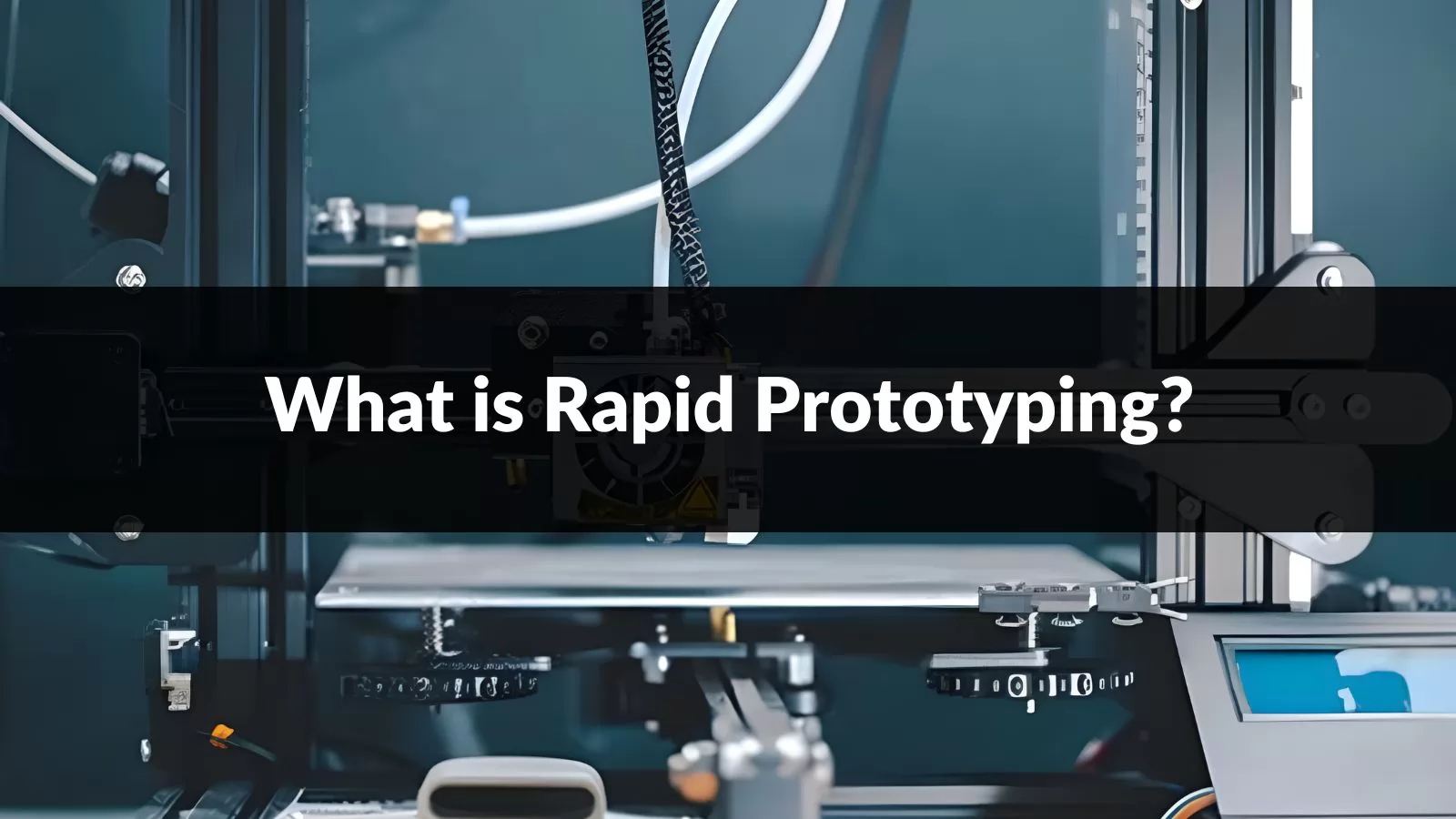
Rapid prototyping is an agile manufacturing process that quickly fabricates a scale model of a physical part or assembly using three-dimensional computer-aided design (CAD). It enables designers and engineers to create prototypes within hours or days, rather than weeks or months, facilitating faster product development and iteration.
Discover the transformative power of rapid prototyping in streamlining product creation and enhancing innovation. Immerse yourself in this critical technology that stands at the forefront of modern engineering and design, pushing the boundaries of speed, efficiency, and creativity.
What is Rapid Prototyping?
Rapid prototyping is an iterative approach to the development of prototypes, which allows designers and engineers to create physical models quickly using 3D printing technology or other advanced manufacturing processes. The primary objective of this technique is to produce a tangible representation of a product or component early in the design process for visualization, testing, user feedback, and refining functionality. It differs from traditional prototyping by emphasizing speed and flexibility.
A key aspect of rapid prototyping involves the ability to modify designs rapidly based on input and iteratively enhance the prototype until it meets desired criteria. The integration of computer-aided design (CAD) software accelerates the transition from virtual models to physical objects, allowing for detailed exploration and resolution of potential issues before moving to more expensive production-ready prototypes. This practice serves as a critical phase in product development, enabling cost-effective refinement and often leading to improved end products.
How Does Rapid Prototyping Work?
Rapid prototyping is a process by which physical objects are quickly fabricated from a computer-aided design (CAD) model. This is achieved using various types of additive manufacturing technologies, commonly referred to as 3D printing, alongside more traditional subtractive methods like CNC machining. The workflow typically begins with the creation of a detailed digital design in a CAD program. This design file contains precise geometric data that can be understood by rapid prototyping machines.
Once the CAD model is prepared, it’s transferred to the equipment that will build the prototype. The method used dictates how the object will be produced; however, most techniques work layer-by-layer to create the object from the ground up. Materials are added or solidified incrementally until the item is completed and matches the original design specifications.
Software plays a critical role throughout this process. It slices the 3D model into layers and translates this information into instructions—often G-code—that guide machine movements and material deposition.
The speed at which prototypes can be created allows for rapid iterations where designers test and refine their concepts early in the development cycle, reducing lead times for project completion significantly compared to traditional methods.
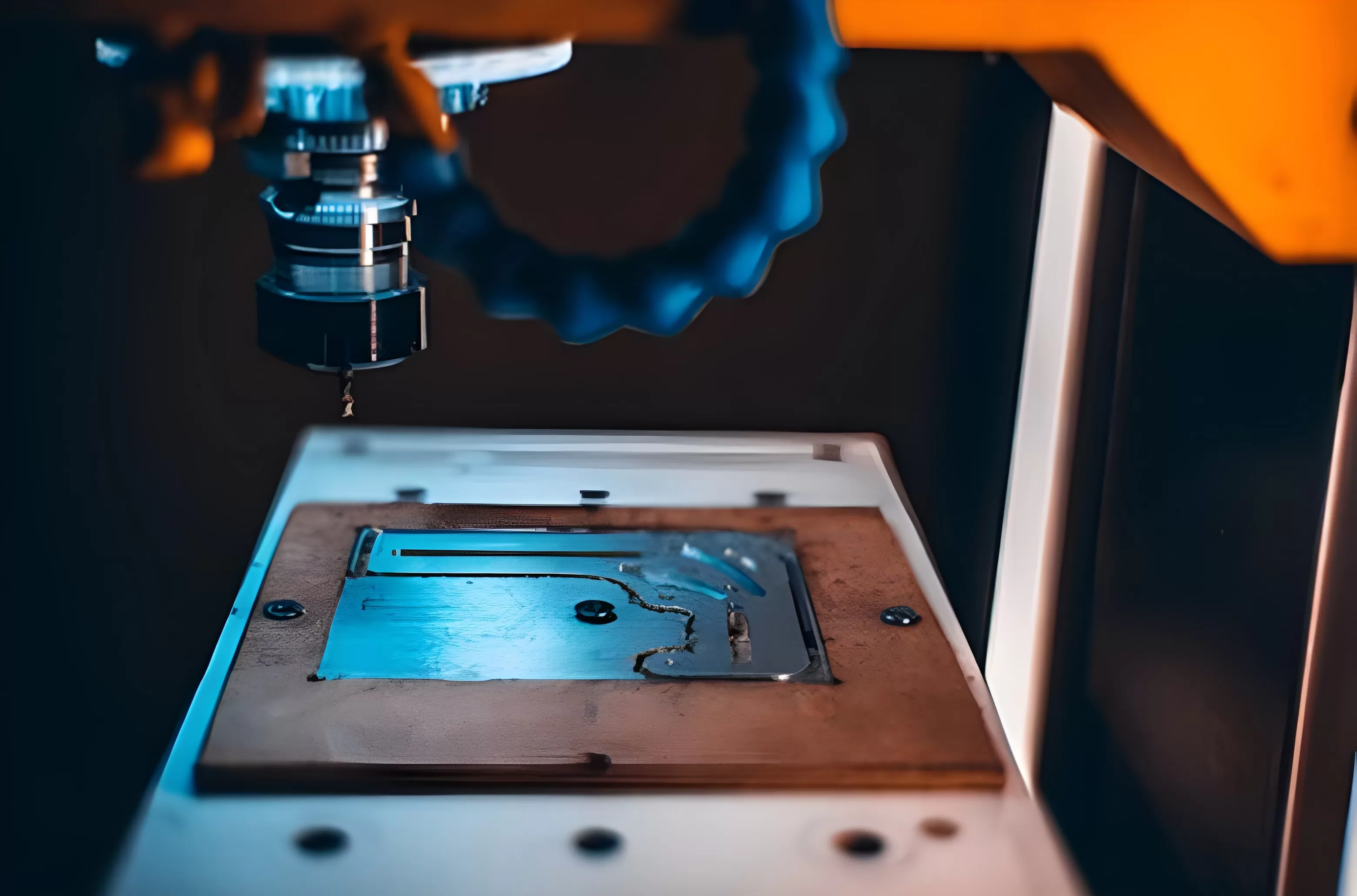
Rapid Prototyping vs Prototyping
Rapid prototyping is a group of techniques used to quickly fabricate a scale model of a physical part or assembly using three-dimensional computer-aided design (CAD) data. The primary difference between rapid prototyping and traditional prototyping lies in speed, iterative capabilities, and the level of detail achievable within this shortened time frame. It serves as a bridge between initial design and final product, allowing for quick feedback and iteration, while traditional prototyping often takes considerably longer and may not support multiple iterations due to time and cost constraints.
Traditional prototyping methods, while still valuable in certain circumstances, typically involve slower processes such as crafting individual components manually or using time-intensive machining methods. On the other hand, rapid prototyping utilizes advanced manufacturing techniques like 3D printing to construct prototypes quickly from digital files, enabling designers and engineers to test form, fit, and function rapidly. This comparison highlights different objectives: where traditional prototyping focuses on creating a very close representation of the final product even if it’s time-consuming and costly, rapid prototyping emphasizes fast production to test hypotheses and make immediate improvements.
| Comparison Criteria | Rapid Prototyping | Traditional Prototyping |
|---|---|---|
| Speed | Fast fabrication of models within hours or days. | Slower process; can take weeks or even months. |
| Iterative Capability | Supports numerous iterations quickly for continuous improvement. | Typically limited iterations due to longer lead times and higher costs. |
| Level of Detail | Varies by technology; some methods can offer details near production quality. | High level of detail possible but may be limited by manual processes or machining precision. |
| Associated Costs | Generally lower due to automation and decreased material waste. | Higher due to manual labor costs and potential material waste. |
| Design Flexibility | High flexibility with digital designs easily altered for each iteration. | Less flexible with changes requiring significant rework or entire rebuilds in some cases. |
| Functionality Testing | Enables basic functional tests depending on the prototype material chosen. | Full functionality tests possible with materials close or identical to the end-use product. |
| Feedback Loop Efficiency | Rapid feedback due to quick turnaround from design to prototype. | Slower feedback loop owing to extended development times for each prototype version. |
| Ideal Use Cases | Early-stage design validation, ergonomic studies, aesthetic evaluations. | Final-stage testing where the prototype represents final materials and production methods closely. |
3D Printing for Rapid Prototyping
3D printing stands as a cornerstone of rapid prototyping, offering the versatility and speed required to transform digital designs into physical models with a remarkable degree of precision. This additive manufacturing process involves layer-by-layer construction of objects using various materials such as plastics, resins, or metals, which enables designers and engineers to iterate quickly through design changes.
In rapid prototyping, 3D printing allows for the direct fabrication of complex geometries that would be challenging or impossible to achieve with traditional subtractive manufacturing techniques. It can accommodate an array of product complexities from simple to intricate designs aimed at functional testing or aesthetic verifications. The integration of 3D printing in the prototype development phase drastically reduces the time from concept to creation when compared with conventional methods.
Understanding material properties is vital as different 3D printers are compatible with different types of materials. Each offers unique characteristics that may affect the finish, durability, and function of the prototype. Consequently, selecting appropriate materials is essential for achieving intended results and meeting specific prototype requirements.
The simplicity and cost-effectiveness are advantageous features; even small-scale businesses or individual entrepreneurs can access 3D printing technology thanks to desktop printers’ availability. Meanwhile, industrial-grade machines provide larger print volumes and higher resolutions for more demanding prototyping needs.
Advantages of Rapid Prototyping
Rapid prototyping brings forth a multitude of benefits that streamline product development. This process significantly reduces the time between initial design and analysis, allowing for swift iterations and modifications based on real-world testing and feedback. By enabling quick production of prototypes, designers and engineers can identify design flaws early, thereby decreasing the risk of costly errors in the full-scale production stage.
Cost efficiency is another key advantage, as rapid prototyping minimizes the investment required for tooling and molds that would otherwise be necessary for traditional manufacturing techniques. It also promotes creativity and innovation by providing the freedom to experiment with complex shapes and designs that may not be feasible with conventional methods.
Furthermore, rapid prototyping fosters improved communication among project teams. Physical models are more effective at conveying concepts than two-dimensional drawings, enabling stakeholders to grasp ideas tangibly. This clear visualization helps in making better-informed decisions regarding product aesthetics, ergonomics, and functionality.
Additionally, customer involvement can be heightened during the development process as prototypes provide a concrete representation of the product for market testing before committing significant resources to mass production. This customer feedback can be crucial for tailoring products to meet market demand successfully.
Lastly, rapid prototyping offers a competitive advantage by accelerating the time-to-market for new products. Companies that utilize rapid prototyping technologies can often surpass competitors by launching innovative products more quickly while maintaining high standards of quality assurance through iterative testing.
| Benefits | Description |
|---|---|
| Time Reduction | Accelerates design analysis and modification processes through quick prototype iterations. |
| Cost Efficiency | Reduces tooling costs associated with traditional manufacturing methods. |
| Design Flexibility | Permits experimentation with complex geometries that might be challenging to achieve conventionally. |
| Enhanced Communication | Improved ability to convey concepts via tangible models compared to 2D drawings or digital simulations. |
| Increased Customer Involvement | Encourages early market testing using actual prototypes for user feedback integration into design. |
| Competitive Edge | Allows faster product launches by shortening development cycles |
| Risk Mitigation | Identifies potential design flaws earlier in the process, avoiding expensive alterations later on. |
| Quality Assurance | Facilitates thorough testing at every iteration improving overall product standards |
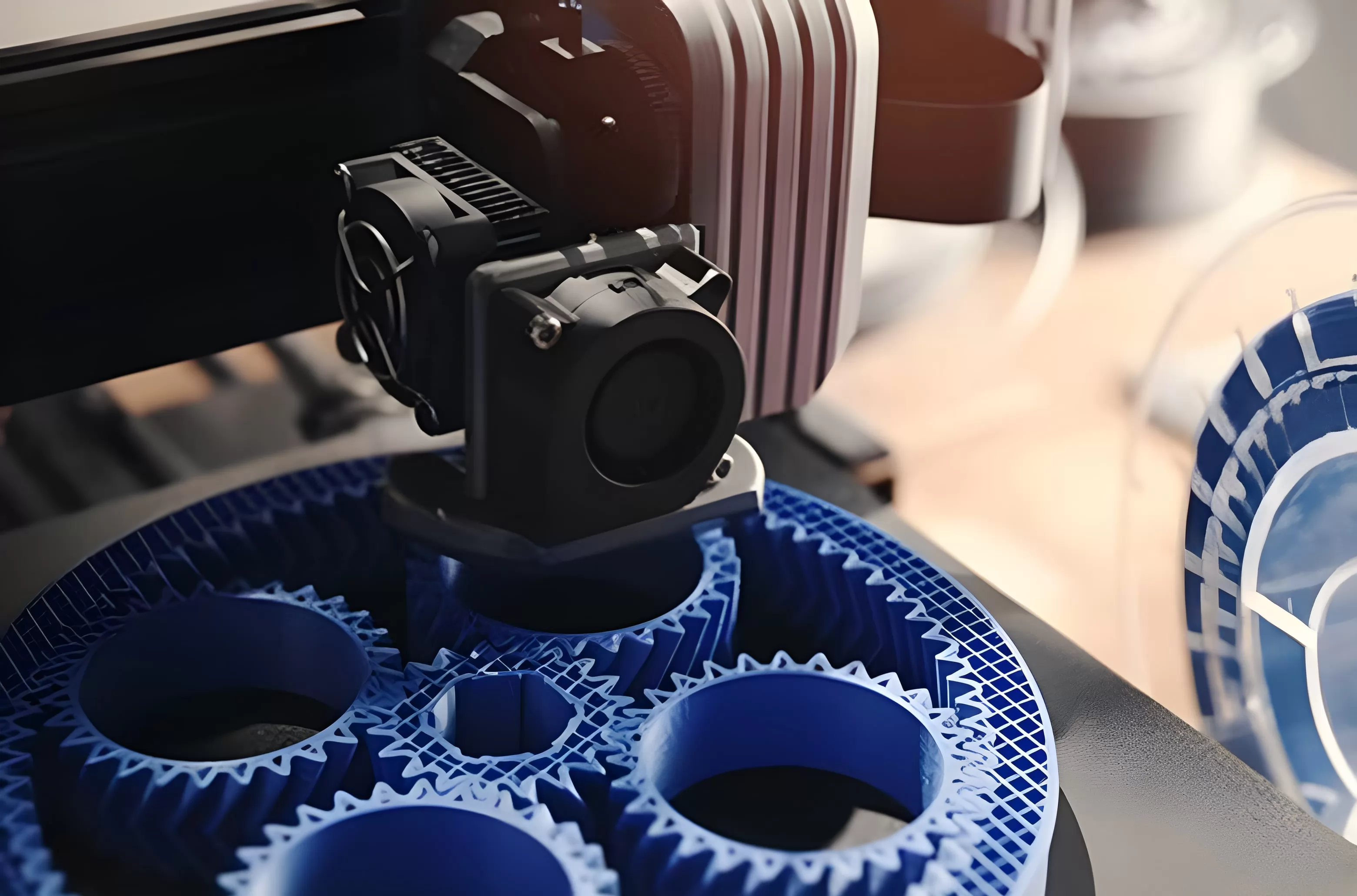
Process of Rapid Prototyping
In the realm of product development, rapid prototyping serves as a crucial and multifaceted process. It typically involves different stages that transform an idea into a tangible model, ultimately leading toward production-ready prototypes.
| Stage | Purpose |
|---|---|
| Proof-of-Concept (PoC) Prototypes | To test if an idea can be turned into a viable product by focusing on core functionalities |
| Concept Models | Supplementary early-stage models used for studying design aspects without functional features |
| Looks-Like Prototypes | To evaluate aesthetic elements like shape, size & visual appeal |
| Works-Like Prototypes | For testing whether a product functions according to its requirements |
| Engineering Prototypes | Integrates aesthetics with functionality using better materials for late-stage developments |
| Validation Testing and Manufacturing | Ensures products can be reproduced reliably at scale while meeting all quality standards |
1.Proof-of-Concept (PoC) Prototypes and Concept Models
Proof-of-Concept (PoC) prototypes and concept models are the initial stages in the rapid prototyping process, focusing on testing ideas and validating the functionality of a design. PoC prototypes are often rudimentary versions of the intended end-product; their primary purpose is to demonstrate that a particular concept or theory is feasible in practice. This type of prototype does not necessarily have to resemble the final product in appearance but must be able to prove that the underlying technology or idea can work.
On the other hand, concept models serve a slightly different purpose. While they too are concerned with early exploration of new ideas, their focus is more on examining look and feel rather than functionality. Concept models might not include all functioning features but are used primarily to communicate design intent and generate discussion among stakeholders. These types of models are crucial for facilitating early design decisions before further investment into development is made.
Utilizing PoC prototypes and concept models allows designers and engineers to identify potential issues early on, saving time and resources by preventing those problems from carrying through into later stages of product development. They enable adjustments to designs before committing to more costly levels of prototyping or production, ensuring better outcomes in functionality, user experience, and manufacturability.
2.Looks-Like Prototypes
Looks-Like prototypes refer to physical models that closely represent the final product’s appearance, but do not necessarily function as the product would. The development of Looks-Like prototypes is a crucial step in the design process because it allows designers and stakeholders to evaluate the aesthetic and ergonomic aspects of a product before committing to the more costly development of functional versions.
These prototypes are often created using processes such as 3D printing, CNC machining, or hand-crafted modeling which allow for detailed surface finishing and color matching. They typically include textures, colors, and sometimes multiple assembled parts to give an accurate representation of how the final product will look. Looks-Like prototypes are utilized for market research, presentations to stakeholders or investors, and as reference points for industrial designers.
The focus on visual fidelity means looks-like prototypes require careful material selection and craftsmanship around fine details to ensure they accurately simulate the finish level desired in full production. Although these models won’t embody operational features or contain electronics if those are part of the eventual product, they play an essential role in decision-making regarding form factor and aesthetics.
3.Works-Like Prototypes
Works-like prototypes are tangible representations of a product that embody its functional aspects, minus the exact appearance or aesthetics of the final form. In this stage of rapid prototyping, the focus is on replicating the essential functionalities and systems interactions that will be present in the end product. Designers use these prototypes to evaluate and demonstrate how a new product will work under real-life conditions, allowing for testing user interaction, mechanical components, electronic systems, software integration, and other pertinent functions.
The main aim is to prove that the concept can operate as intended and spot any issues related to its functionality. This step is critical before moving on to more expensive production-grade prototyping or tooling. Techniques such as 3D printing, CNC machining, breadboarding for electronics, and using development kits might be employed at this phase depending on the project requirements.
4.Engineering Prototypes
This process may involve subjecting the prototype to stress tests, durability assessments, and performance evaluations that closely mimic actual use scenarios.
To create an engineering prototype, a combination of advanced materials suited for functional testing is used. The chosen materials must possess similar characteristics to those specified for the final product to ensure relevant and accurate test data. Moreover, precise manufacturing techniques are pivotal in realizing components with tight tolerances and correct dimensions necessary for assessing fit, form, and function.
Testing of engineering prototypes not only informs design iterations but also aids in establishing manufacturing processes. For instance, it can highlight which parts may pose challenges during mass production or reveal potential quality control issues. Bridging the gap between theoretical design and tangible product, these prototypes play a vital role in risk reduction by preemptively addressing problems that could have been costly if revealed after market launch.
5.Validation Testing and Manufacturing
Rapid prototyping is essential in product development as it leads up to the critical stages of validation testing and manufacturing. During the validation testing phase, prototypes are subjected to various tests that mimic the real-world stresses and uses they will encounter upon release. This step ensures that designers receive actionable feedback regarding the performance, durability, and user interactions with the product under simulated conditions that resemble actual usage as closely as possible.
Upon successful validation testing, products move into manufacturing. It’s a meticulous transition as the prototyping phase was about speed and iteratively refining designs whereas manufacturing demands consistency, cost-efficiency, and scalability. Transitioning from hand-built prototypes to mass-produced units often involves finalizing design changes that make production feasible without compromising product quality or functionality.
Key considerations during this phase include selecting materials that are both economical for large-scale production and meet performance criteria, ensuring quality control methods appropriate for high-volume fabrication are in place, and making certain that assembly processes are optimized for efficiency. If rapid prototyping tools were involved initially, sometimes new tools suitable for sustained operations need to be introduced to accommodate full-scale production.
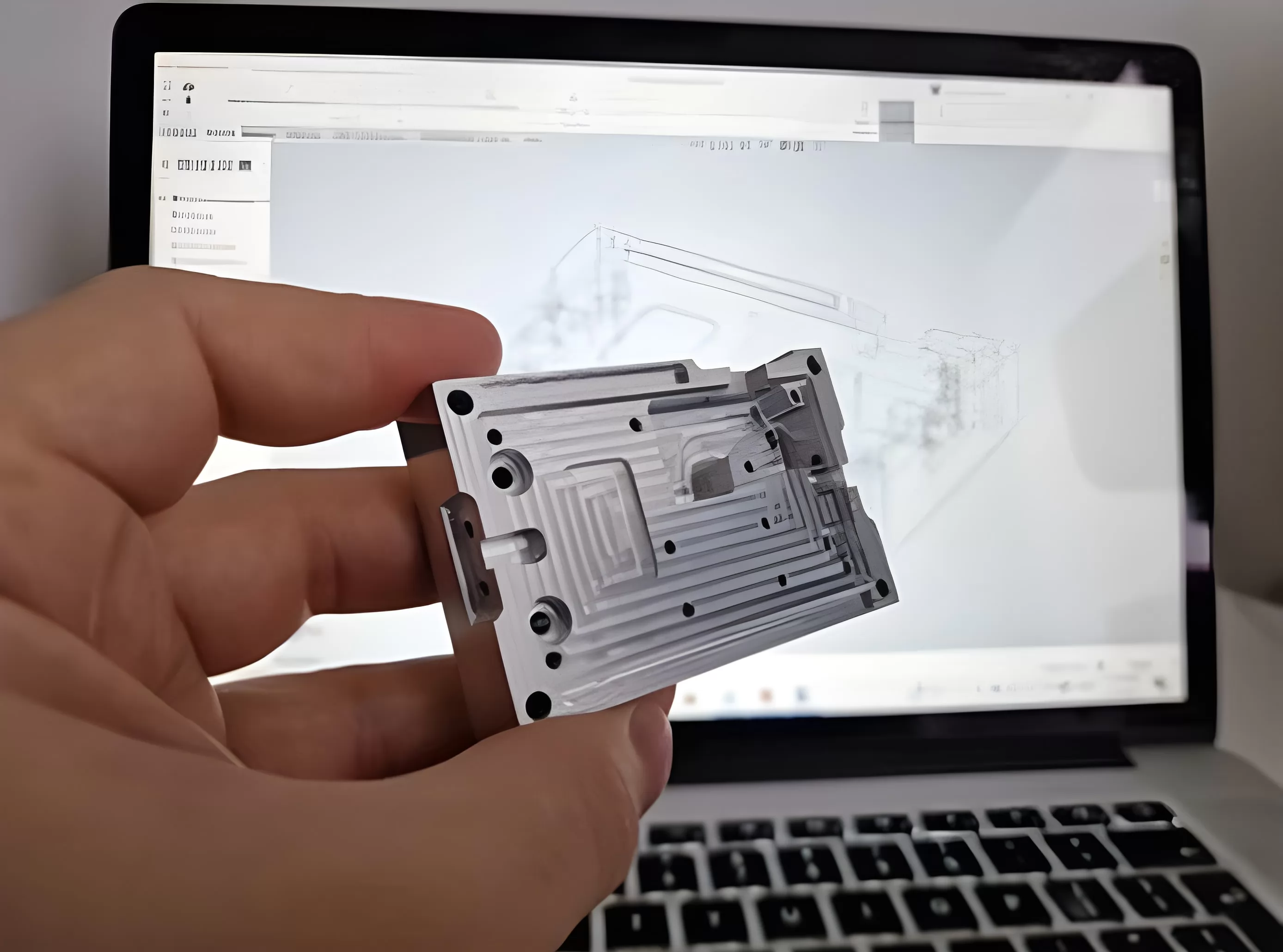
Rapid Prototyping Tools and Methods
The primary tools and methods used for rapid prototyping are 3D printers and CNC (Computer Numerical Control) tools.
| Tool/Method | Description | Advantages | Disadvantages |
|---|---|---|---|
| 3D Printing | Additive process that builds parts layer by layer from CAD data. | - Quick turnaround - Complex geometries - No need for tooling | - Material limitations - Lower structural strength than some traditional methods |
| CNC Machining | Subtractive process where material is removed from a solid block using controlled tools and machines. | - High precision - Great material versatility - Excellent surface finish | - Slower than additive methods - Requires skilled operators |
3D Printers For Rapid Prototyping
In the realm of rapid prototyping, 3D printers are indispensable tools, offering versatility and efficiency in materializing design concepts into tangible models. These devices operate by interpreting digital files from computer-aided design (CAD) models and systematically building up layers of material—be it plastic, metal, or resin—to form physical objects. The process commences with a detailed virtual rendition of the prototype that is sliced into thin horizontal layers. The 3D printer then goes to work, creating one layer at a time until a complete prototype is produced.
There are various technologies behind 3D printing for rapid prototyping, each relying on different materials and mechanics to realize the end product. Among these are Fused Deposition Modeling (FDM), where thermoplastic filaments are melted and extruded through a nozzle; Stereolithography (SLA) uses an ultraviolet (UV) laser to harden liquid resin in a precise pattern layer by layer; Selective Laser Sintering (SLS) involves lasers fusing powdered material.
The selection of a particular type of 3D printing technology generally depends on factors such as the desired strength, detail, cost, and material properties required for the prototype. Choosing appropriately can significantly influence not only the fidelity of concept representation but also functionality tests and aesthetic evaluations.
Given their speed and ability to produce complex geometries with relative ease, 3D printers are considered almost synonymous with rapid prototyping. They allow designers to iterate rapidly with minimal constraints imposed by traditional manufacturing processes and without substantial upfront costs typical for mold production or specialized tooling.
CNC Tools For Rapid Prototyping
CNC machines work by subtracting material from a solid block, known as subtractive manufacturing, to shape the desired prototype. Various materials can be used with CNC tools including metals, plastics, and wood.
The precision of CNC machines is one of their standout features for rapid prototyping. With these tools, engineers and designers can achieve high tolerances and create prototypes that closely match the final product specifications. The versatility of CNC machines allows for the prototyping of complex parts and geometries that might be difficult or impossible to produce with other methods.
Additionally, the durability of prototypes created via CNC machining is often superior to those produced by additive manufacturing techniques due to the properties of the bulk materials used. This enables testing under more rigorous conditions, which is critical for certain applications.
However, there are some limitations when using CNC tools for rapid prototyping. The process can be slower than some additive methods because it involves removing material rather than building it up layer-by-layer. Furthermore, waste material generated during the machining process must be managed effectively.
Designers opting for CNC machined prototypes must carefully consider their design to ensure it can be effectively manufactured using these tools. Features such as deep cavities may require special tooling or may not be achievable at all due to tool access limitations within the machining space.
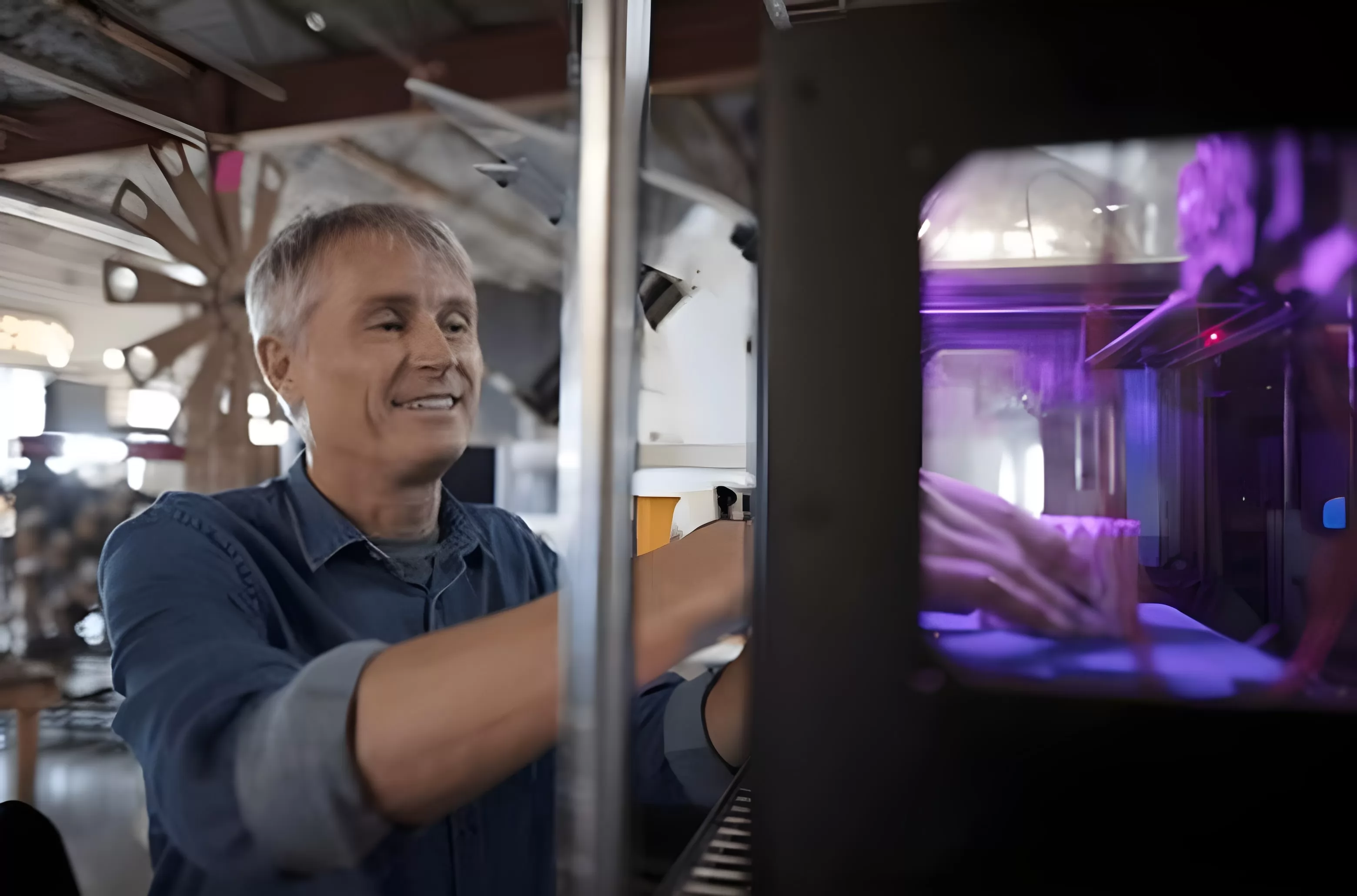
Types of Rapid Prototyping
Rapid prototyping encompasses a variety of techniques each suited to different stages in the design process and intended for various use-cases. Below we discuss several common types that are instrumental in product development.
| Technology | Description | Materials Used | Surface Finish | Accuracy | Applications |
|---|---|---|---|---|---|
| FDM (Fused Deposition Modeling) | Additive manufacturing process that uses a continuous filament of a thermoplastic material. | Thermoplastics like ABS, PLA | Rough, requires post-processing | Moderate | Functional prototypes, limited-run manufacturing |
| SLA (Stereolithography) | Uses a laser to cure liquid resin into hardened plastic in a process called photopolymerization. | Photopolymer resins | Smooth, high-quality | High | Detailed prototypes, patterns, molds |
| SLS (Selective Laser Sintering) | Uses a laser to sinter powdered material, binding it together to create a solid structure. | Nylon, polymers, metals, glass, ceramics | Slightly rough, grainy | High | Functional parts, complex geometries |
| SLM (Selective Laser Melting) / Powder Bed Fusion | A laser fully melts the metal powder to create high-density parts. | Metals like stainless steel, titanium, aluminum | Smooth, may require post-processing | Very High | Aerospace, automotive, medical |
| LOM (Laminated Object Manufacturing) / Sheet Lamination | Layers of material are laminated together and cut to shape with a laser or knife. | Paper, plastic, metal foils | Depends on material, may be rough | Moderate | Concept models, patterns, large objects |
| DLP (Digital Light Processing) | Similar to SLA, but uses a digital light projector to flash a single image of each layer all at once. | Photopolymer resins | Smooth, high-quality | High | Detailed prototypes, dental applications |
| Binder Jetting | A print head moves across a bed of powder material, selectively depositing a liquid binding agent. | Sandstone, metals, ceramics | Rough, grainy | Moderate | Full-color concept models, molds |
FUSED DEPOSITION MODELING (FDM)
Fused Deposition Modeling (FDM) is a type of 3D printing technology that functions by laying down material in layers to construct an object. This technology works with thermoplastic polymers that are heated to their melting point and then extruded through a nozzle onto the build platform, creating each cross-sectional layer of the desired object. The nozzle moves along specified paths determined by the computer-aided design (CAD) file that guides the printer.
One of the critical attributes of FDM is its material versatility; it can work with a range of standard engineering plastics such as ABS, PLA, and their blends with additives for increased functionality. Because of its widespread availability and ease of use, FDM machines range from consumer-friendly desktop models to larger, industrial-grade machines capable of larger builds.
Precision in FDM can vary depending on machine calibration, nozzle size, and print speed. Typically used for prototyping purposes as well as production-grade parts within certain tolerance levels, FDM is renowned for its strength and durability when compared to other forms of rapid prototyping.
Maintenance in FDM printers involves regular cleaning and occasionally replacing parts such as nozzles or build plates. While not producing the smoothest surfaces straight out of the printer compared to other technologies like SLA or SLS, parts made using FDM can be easily sanded or machined post-printing for improved surface quality or tighter dimensional accuracy.
STEREOLITHOGRAPHY (SLA)
Stereolithography (SLA) is a form of rapid prototyping technology that is prized for its ability to produce highly accurate and detailed physical models from digital designs. SLA operates on the principle of photopolymerization, which involves using an ultraviolet (UV) laser to selectively cure and solidify a photosensitive liquid resin. This process occurs layer by layer, with each slice of the design being traced by the UV laser onto the surface of the liquid, causing the resin to harden where the beam focuses.
The capabilities of SLA make it particularly advantageous when intricate details or a smooth surface finish are necessary. Since the layers can be extremely thin, sometimes as fine as 0.025 millimeters, this technique can realize features that other forms of rapid prototyping cannot achieve as readily. As such, SLA parts often require minimal post-processing to reach their final form.
However, there are considerations to keep in mind with SLA. The materials available for this method are limited mostly to various resins which might not have the same mechanical properties as other industrial materials and thus may not be suitable for functional testing where material properties are critical. Moreover, though durable enough for many applications, parts produced via SLA may become brittle over time due to the inherent properties of cured resins.
SELECTIVE LASER SINTERING (SLS)
Selective Laser Sintering (SLS) is a sophisticated rapid prototyping technique that uses a high-powered laser to sinter powdered material, typically plastic or metal, into a solid three-dimensional structure. The process begins with the laser selectively fusing powder particles in the shape of the first layer of the desired prototype. After the initial layer is sintered, a new layer of powder is spread over the surface and the process repeats, layer by layer, until the part is fully formed.
Unlike some other forms of 3D printing, SLS does not require support structures since unsintered powder surrounds and supports the part during production. This feature allows for complex geometries and interlocking parts without additional assembly. Materials commonly used in SLS include nylon, polystyrene, glass-filled or aluminum-filled materials, and various metals for direct metal laser sintering (DMLS).
The finish quality of SLS prototypes is somewhat rough compared to processes like stereolithography or polyjet modeling but can be improved with post-processing techniques such as sandblasting or painting. Since no support structures are used, post-processing also involves simply breaking away any loose powder surrounding the build.
Selective Laser Melting (SLM) or Powder Bed Fusion
Selective Laser Melting (SLM), also known as Powder Bed Fusion, is an additive manufacturing technique that uses a high-powered laser beam to fuse fine metal powders together. During the process, the powders are evenly distributed across a build platform inside a chamber containing inert gas atmosphere to prevent oxidation. The laser selectively melts and solidifies a cross-section of the object, following computer-aided design (CAD) data. Once a layer is completed, the build platform lowers incrementally, and a new layer of powder is spread on top. The process repeats until the entire part is built up from successive layers.
The materials used in SLM typically include various metals and alloys like stainless steel, aluminum, titanium, cobalt-chrome, and nickel-based superalloys. This method is particularly valuable for producing complex geometries with internal features that would be challenging or impossible to achieve with traditional subtractive manufacturing processes.
SLM offers advantages in terms of high-density parts with excellent mechanical properties suitable for functional prototypes and end-use production components. Due to its ability to consolidate complex assemblies into single parts, it minimizes material waste and can lead to lightweighting opportunities particularly beneficial in aerospace and automotive industries.
Laminated Object Manufacturing (LOM) or Sheet Lamination
Laminated Object Manufacturing, also known as Sheet Lamination, involves the layer-by-layer assembly of objects using sheets of material bonded with adhesive. Sheets can be made from various substrates including paper, metal, or plastic, and are laminated together using a combination of pressure and heat. The desired cross-sectional shapes are cut with a laser or another cutting device after each sheet is affixed. Excess material remains in place during the process to support the structure but is then removed to reveal the finished prototype.
The cost-effectiveness of LOM comes from both the affordability of raw materials and low operational costs. This rapid prototyping technique is suitable for creating larger prototypes relatively quickly since it doesn’t require as much time for individual layer adhesion compared to other methods. It’s important to note that while LOM can efficiently produce models with a good size-to-cost ratio, the resulting prototypes may lack the strength and resolution of those created by other additive manufacturing techniques.
Digital Light Processing (DLP)
Digital Light Processing (DLP) is a form of 3D printing technology utilized for rapid prototyping. It operates on the principle of photopolymerization, using a digital light projector screen to flash a single image of each layer across the entire platform at once. This method is beneficial in achieving faster print times compared to techniques that rely on point-by-point or line-by-line strategies.
With DLP, a liquid photopolymeric resin is cured by light, and the build platform moves upwards or downwards after each layer has solidified. The resolution and surface finish of DLP are determined by the pixel size of the projector, commonly resulting in high-quality prototypes with fine features and a smooth surface finish. Another notable advantage of DLP technology lies in its ability to produce complex geometries that might be challenging for other forms of rapid prototyping.
The applications for DLP are extensive within industries that demand precision and fine detail such as dental, jewelry, and product design. Despite its many benefits, users must carefully consider the choice of resin for their application, as different materials have varying properties such as strength, flexibility, and biocompatibility.
In summary, DLP serves as an efficient means for creating high-resolution prototypes rapidly with excellent detail and surface quality. Professionals across various sectors utilize this technology due to its capacity to fabricate intricate designs which may not be possible through alternative prototyping methods.
Binder Jetting
Binder Jetting is a distinct rapid prototyping process that involves joining a powdered material with a liquid binding agent. The machine spreads out a thin layer of powder and then selectively applies the binder in the areas where the current cross-section of the part is to be formed. This step is repeated, layer after layer, until the desired shape is achieved. After printing, the unbound powder supports the structure and can be removed to recycle.
As this technology works with various materials including metals, ceramics, and sand, it offers versatility for several applications such as creating intricate metal parts without resorting to metal sintering processes or producing large sand casting cores and molds directly from CAD data.
Another key advantage of Binder Jetting resides in its capacity to print full-color prototypes by incorporating colored binders—making it ideal for realistic product visualizations. Its ability to produce parts quickly while maintaining a competitive cost makes Binder Jetting particularly effective for short runs of complex items that would otherwise be expensive or time-consuming to manufacture.
Despite these benefits, parts produced through Binder Jetting may require post-processing like infiltration (to enhance mechanical properties) or sintering (for metals), thus additional steps should be considered when evaluating this method for prototyping needs.
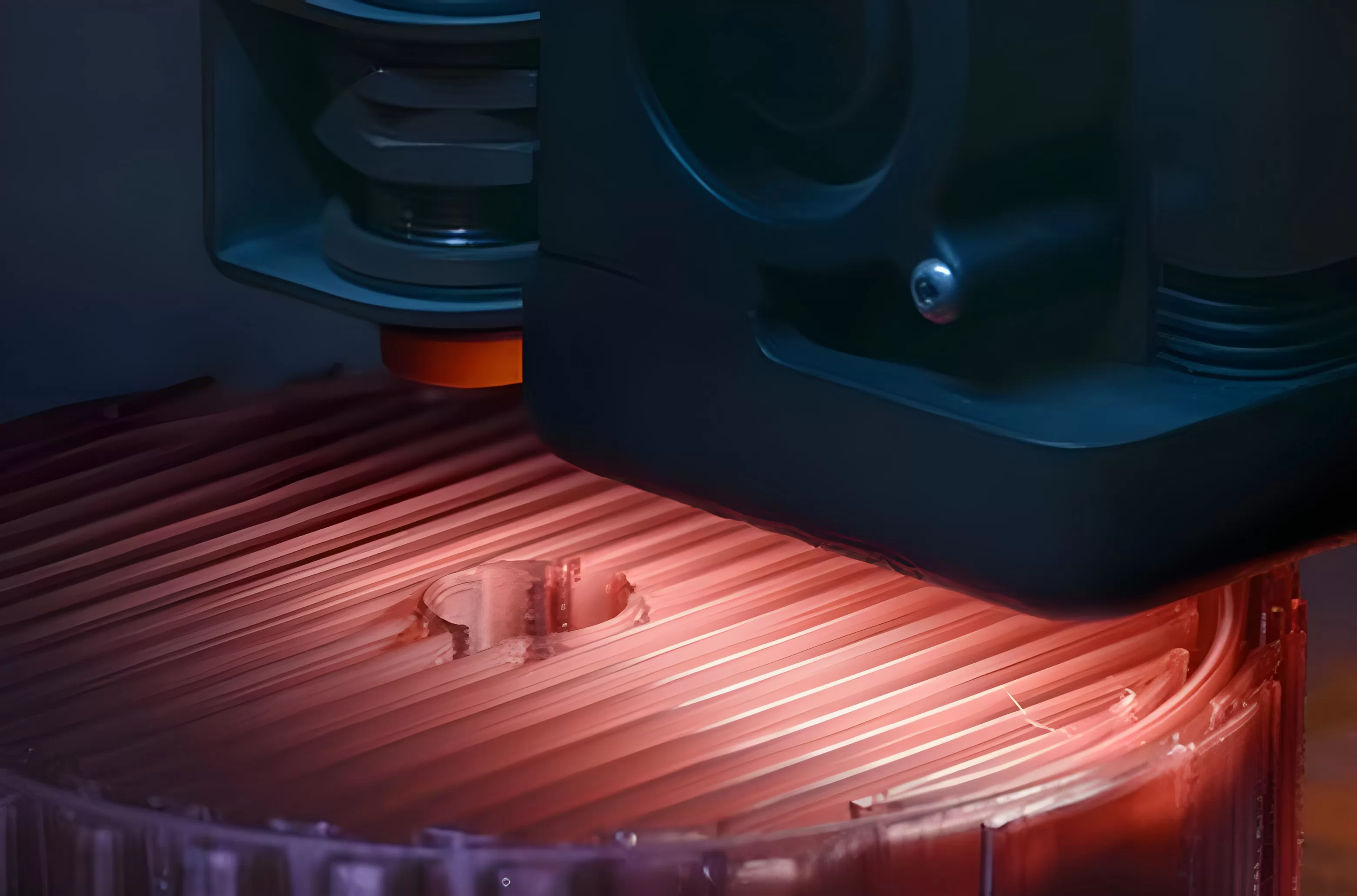
Applications
| Industry | Application of Rapid Prototyping |
|---|---|
| Automotive | Development of vehicle components |
| Aerospace | Production of complex parts suitable for extreme conditions |
| Medical | Creation of prosthetics and anatomical models |
| Consumer Goods | Testing product designs |
| Electronics | Prototyping device enclosures |
| Architecture | Construction of detailed scale models |
| Education | Facilitating hands-on learning experiences |
| Art & Entertainment | Fabricating custom props and sculptures |
Rapid Prototyping Services vs. In-House Rapid Prototyping
When deciding between rapid prototyping services and in-house capabilities, companies must weigh factors such as cost, speed, expertise, and the nature of their prototyping projects.
| Consideration | Rapid Prototyping Services | In-House Rapid Prototyping |
|---|---|---|
| Initial Cost | Low (No need for equipment purchase) | High (Costly equipment purchase) |
| Expertise | High (Access to professionals with broad skills) | Variable (Depends on staff training) |
| Maintenance & Upkeep | Handled by service provider | Responsibility of company |
| Control Over Process | Limited (Dependent on service provider’s schedule) | Full (Direct management of workflow) |
| Speed & Iterations | Can be slower due to external processing times | Potentially quicker due to immediate access |
| Intellectual Property Security | Risks associated with external handling | More secure within company premises |
| Long-term Cost Effectiveness | More expensive per item if frequently used | Lower cost over time with high usage volume |
| Flexibility & Scalability | High flexibility with various technology options available on demand | Scalable according to business growth but requires capital for additional equipment |
In Conclusion
Rapid prototyping is an essential technique in product development, enabling designers and engineers to create, iterate, and refine models efficiently to expedite the path from concept to production.
If you’re aiming to reduce time-to-market and enhance your product development process, consider integrating rapid prototyping into your workflow. Reach out to our team of experts today for a consultation and start transforming your innovative ideas into tangible realities.


